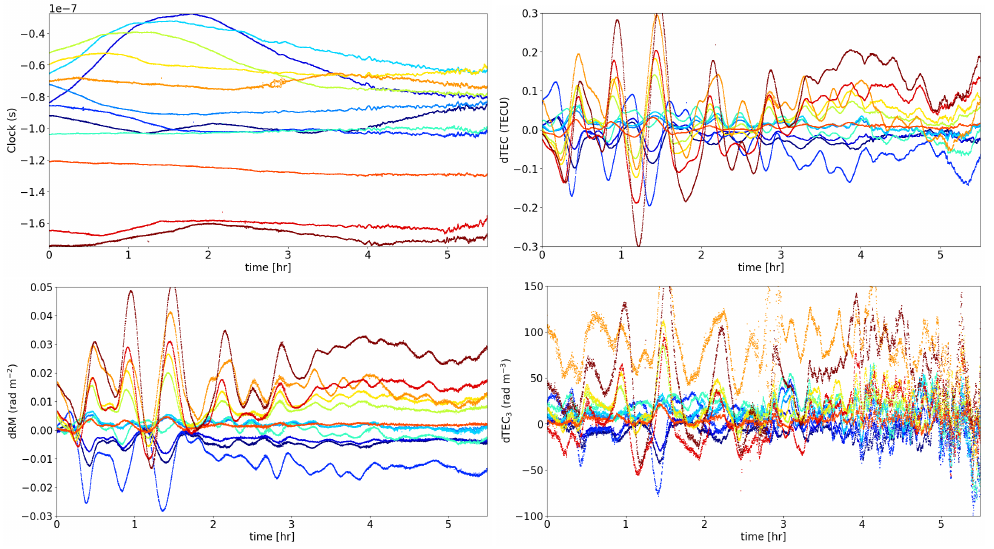Daily Image
18-05-2018The effect of the ionosphere on ultra-low frequency radio-interferometric observations
| Submitter: | F. de Gasperin and M. Mevius |
| Description: | Calibration of LOFAR low band data is particularly difficult due to the ionosphere, which effects become increasingly important towards lower frequencies. The low signal-to-noise regime of these data is a further complication in removing the ionospheric effects. In a recent paper by F. de Gasperin et al. the effects of ionospheric induced systematic errors on LOFAR LBA data are characterized and quantified, thereby providing guidelines for data reduction of current and future low frequency radio telescopes such as SKA. The most prominent effect of the ionosphere is a frequency dependent phase delay, due to propagation effects of the electromagnetic signal through the ionized plasma. To first order this effects goes with 1/frequency although for the lowest frequencies higher order terms (1/frequency^3) become important. Combined with the Earth magnetic field the propagation through the ionosphere causes a splitting of right and left handed signal phases, effectively causing a frequency dependent rotation of the linear polarization, an effect well known as Faraday rotation. The signals at two arms of an interferometer experience a slightly different ionospheric Faraday rotation, resulting in a net polarization in the cross correlation of the signal, even for unpolarized sources. Finally, amplitude scintillation due to small scale structures in the ionosphere is a non negligible effect at LBA frequencies. Here we show one of the highlights of this paper. From the phase solutions of a calibrator observation we were able to detect 3 different ionospheric effects. Using the different frequency behavior over the wide frequency band we were able to separate from the diagonal phases the clock errors (top left), the first order differential ionospheric TEC (top right) and also the third order ionospheric effect (lower right) versus time. Where the ionospheric TEC gives the integrated electron density along the line of sight, the third order effect is related to the vertical distribution of the electrons in the ionosphere. The plot on the lower left shows the differential Faraday rotation. Each line represent a single station. The different ionospheric effects are clearly correlated. https://arxiv.org/abs/1804.07947 |
| Copyright: | M. Mevius |
| Tweet |  |
